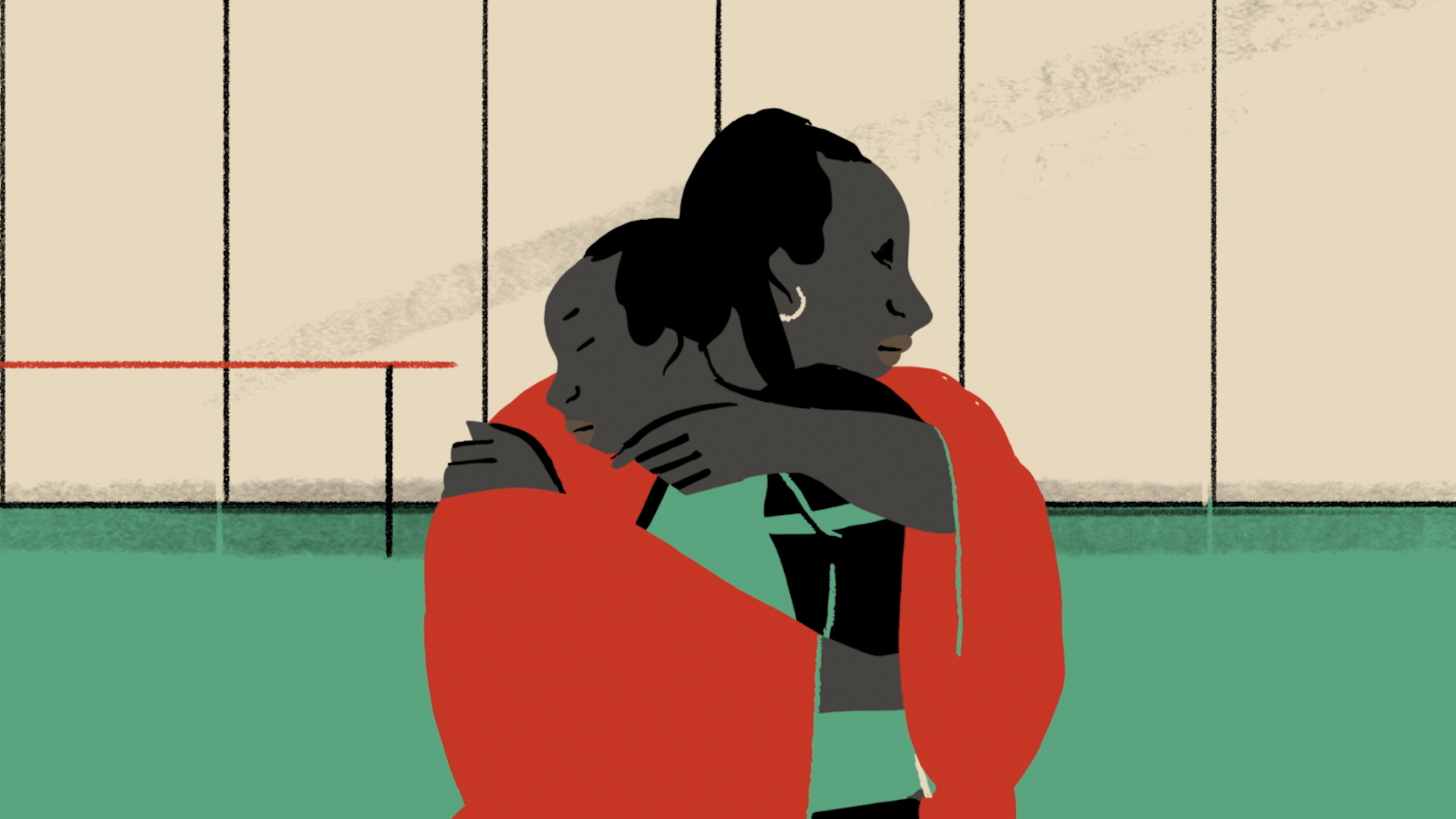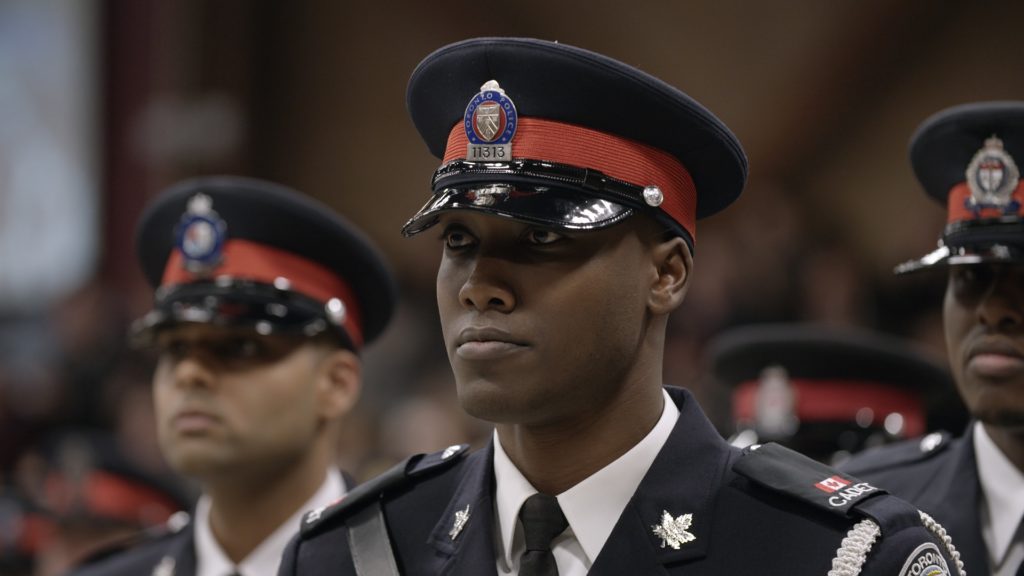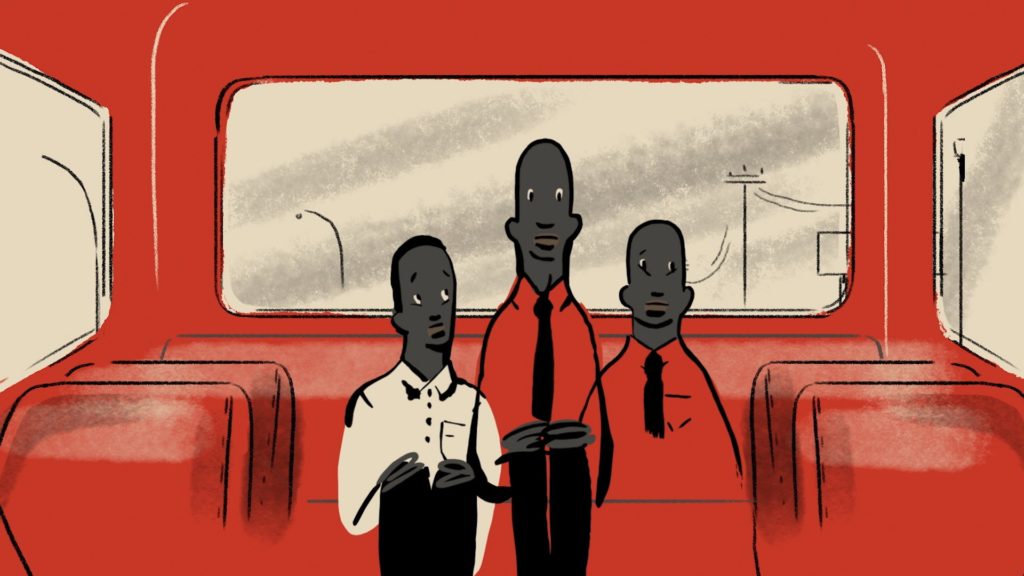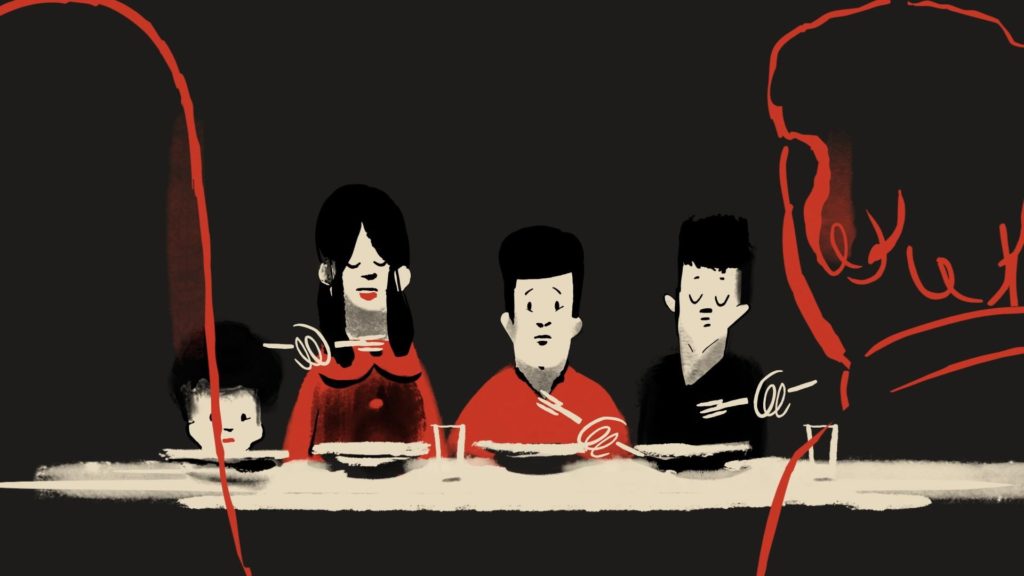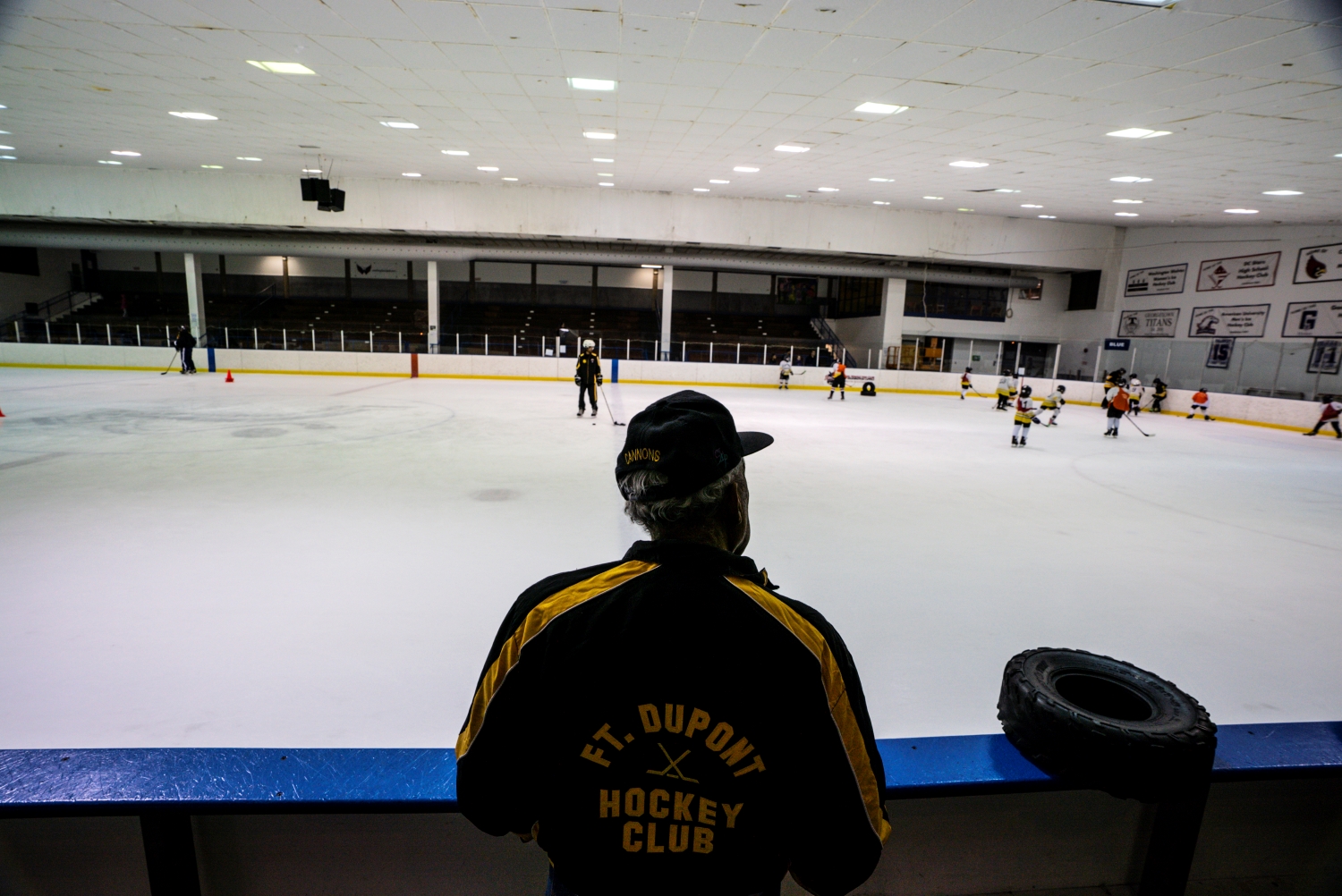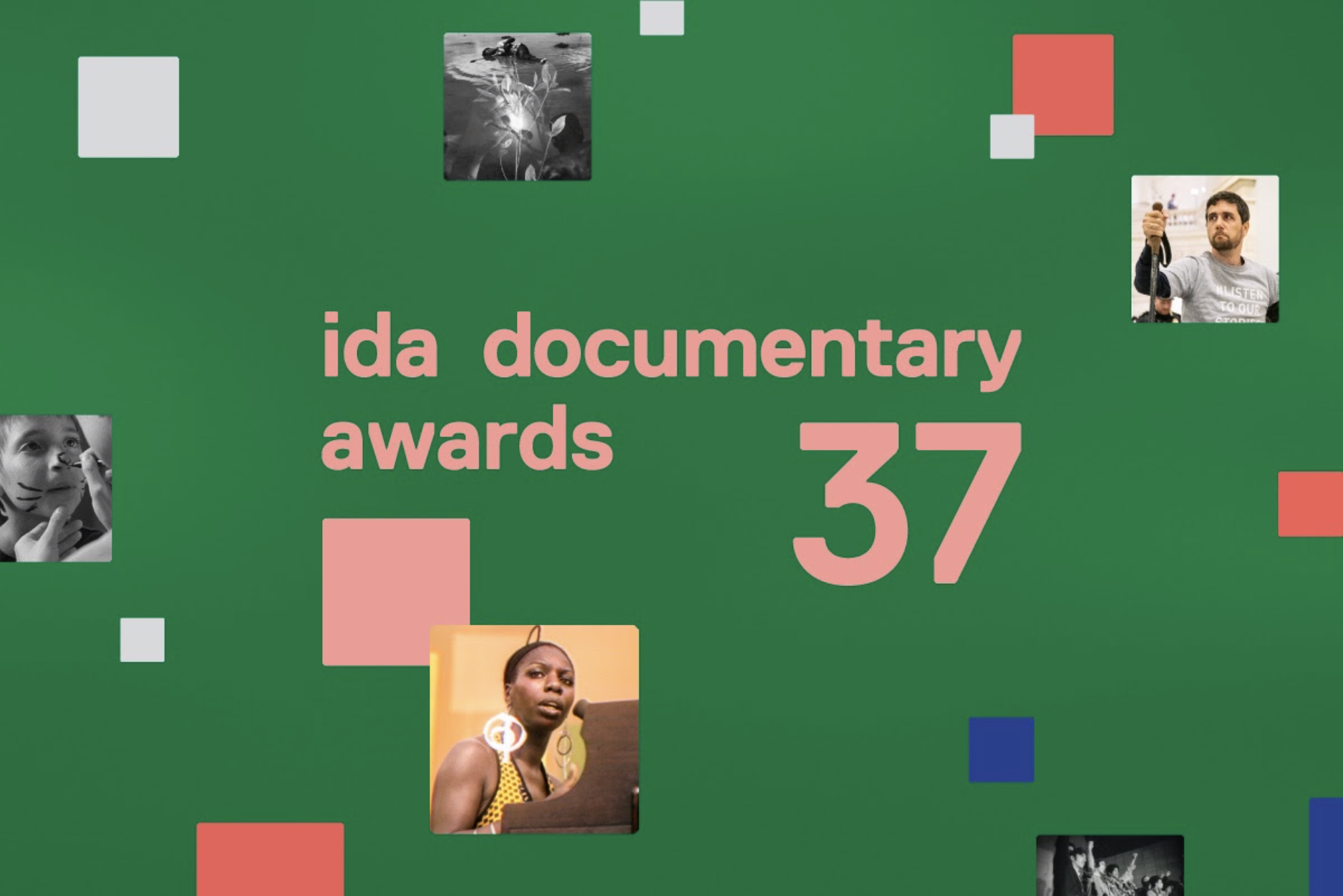Paul Tom’s new film, Alone, is a touching portrait of three child refugees who arrived in Canada without their parents. Via live action and evocative animation, Afshin, Alain and Patricia recount their tortuous journeys to the Canadian border as well as the effort required to rebuild their lives in a new country without parental assistance. Alone is a tribute to the power of resilience. Despite harrowing physical and psychological experiences, these individuals never lost the ability to dream or the desire to put down roots. Alone, the latest project in Tom’s oeuvre on the immigrant experience, sheds light on the challenges faced by the approximately 400 unaccompanied children who seek refugee status in Canada each year.
Paul Tom is a Montreal documentary filmmaker, animator and digital storytelling instructor. His 2017 film Baggage—about immigrant high school students learning to forge their identities—was awarded two Gémeaux.
PT: Paul Tom
POV: Megan Durnford
POV: You were born in a Thai refugee camp. How old were you when you arrived in Canada? How has this personal experience informed the film?
PT: I arrived in Canada in 1985 with my parents. I was 18 months old. I think that the real connection [to the film] is with my parents. By uprooting themselves from Cambodia, my parents made sacrifices in order to give me a better life. And the parents of the subjects in Alone also made many sacrifices in order to give their children more opportunities.
Also, it’s about the importance of the people in the country of arrival—people who can help out, orient us, smile at us and then bring over clothing, [even] help to fill out forms. It really touches me that there are people who are dedicated to making sure that we feel welcome. My parents definitely appreciated all the help they received.
POV: I understand that [scriptwriters] Julie Boisvert and Mylène Péthel had extensively researched the child refugee issue before they approached you with the idea for this film. What was it like to join a project midway compared to developing your own?
PT: I was telling “my” stories for about 10 years. Then I wanted to move on from my personal story. My last film, Baggage, is a good example. Someone else [drama teacher Mélissa Lefebvre] had an idea and she invited me to participate. After Julie and Mylène saw Baggage at the RIDM four years ago, I think that they appreciated my sensitivity to immigrant issues and desire to reveal a wide range of immigrant experiences. I saw the potential for a film about child refugees.
Julie and Mylène already had a clear idea about incorporating animation, so that the stories could be told from a child’s point of view. They knew that I had worked on an animation at the NFB.
As we started to imagine the film together, we thought maybe there should be three subjects. Julie and Mylène had already found two of the subjects, Afshin and Alain. Then, we thought maybe the film should include a younger subject. Ideally, a girl, who had arrived recently. Then there was about one year of writing, which I am not used to. I am used to filming and then just going straight to editing without a lot of written preparation.
I guess it helps that we each had our own strengths—Mylène brought rigour and efficacy; she kept track of the narrative thread. Julie was all about the human aspect, developing emotional ties with the spectator and I was the one who wrote the animation scenarios.
POV: When did you first feel emotionally connected to this film?
PT: One of my first emotional connections to this film was when I saw the first animated sequences and they were put on the editing timeline. Seeing the images respond beautifully to the characters’ testimonies was confirmation that animation was essential. And with the accompaniment of Dominique Fils-Aimé’s voice, I knew that we would be able to reach the emotions I had in my head and heart. That’s when the words and the experiences of the characters took on their full meaning.
POV: Could you tell me about the development of the animation style for this film?
PT: Picbois [the production company] was interested in this project right from the beginning, although they were not sure about the animation. I had envisaged at least 15-20 minutes of animation [for a feature length film] and they were not convinced that it was justified. If you have just have 2-3 minute of animation, then the animation just feels like a gimmick. I was convinced that the animated scenes were an essential part of the project. However, Picbois had produced an animated short, so they were very concerned about the high cost of animation.
For someone who does not do animation, it can be difficult to visualize the animated scenes and also to understand the incredible range of emotions and the layers of meaning that are [made] possible.
It was only after one of the first scenes was edited [Afshin’s parents are watching their child leave on a perilous journey. He is hidden among boxes in the back of a truck that is on its way to Turkey] that everything changed. Karine [Dubois, one of the producers] called me up, very emotional, and apologized for having not been completely on board. She told me that now she understood why the animation was critical to the film.
We had started with a budget for 8 minutes of animation and finally the [82 minute] film has almost 20 minutes of animation. Mind you, we did simplify the animation. The original animation references that we presented to Karine had a lot of camera movement, a lot of texture, some abstract scenes. These made Karine a bit uneasy.
After I met the illustrator Mélanie [Baillairgé], we were able to develop a style that was much simpler. The film is about children, but we did not want it to look naïve . Mélanie managed to find just the right tone, the right aesthetic that makes a real impact, but in such a gentle way.
POV: What is your animation background?
PT: I completed a Bachelors in animation at Concordia in 2010. Then I worked on Shira Avni’s film Petra’s Poem, an animated soliloquy about Down syndrome, at the NFB. I have always loved animation. I love the entire process, the planning and the execution. storyboarding, drawing… just being in your bubble and drawing all day long.
I had a lot of other ideas for animation [projects]. But life happens and I did not always have the necessary time. I did not really work in animation [again] until this film. When Julie and Mylène brought me into this project, it was kind of a gift. Suddenly, I had a chance to write animation scenes, put together an animation team, do the storyboarding.
The production of the animated scenes happened during Covid. There is something very soothing about the minutiae of animation; the attention to detail, segments timed to the second, juggling the sequences. This gave me the desire to get back into animation.
My next project is a short animated film called Le Castor. This film is about a little Asian boy who has to do a school presentation about his grandparents. Because he does not know his grandparents, he decides to invent the story of his grandfather’s life. He invents someone who was a lumberjack, and also a politician like René Lévesque, and who also played hockey like Maurice Richard. He invents a grandfather who will help him to “fit in.”
POV: Afshin, Alain and Patricia have all survived extremely painful experiences. What has helped them to cope and to thrive?
PT: They have had such different experiences. Afshin is driven by performance. Work. For 13 years, he worked every day of the week. He had three jobs at the same time—to make sure that he did not have too much time on his hands, to make sure that he had enough money to be comfortable. In a way, he was searching for approval from his parents—to show them the more I work, the better things will be in my new home country.
Alain is very discrete. He does not express a lot of emotion, but there is a lot going on in his head. It was extremely difficult for him and his brothers to be separated from their parents. A lot changed when Alain proved to everyone that he could be a policeman [after getting into the academy in his seventh attempt]. He is a religious person and really believes that everything happens for a reason. Challenges will only make him stronger. He is motivated by the idea of slowly starting to build a new family. There are so many steps to achieve this goal. For Alain, becoming a policeman is the first step in this process.
Patricia is a force of nature. She is motivated by the thought that one day she will tell her story to the public. It’s almost as if she is continuously writing a book in her head and one day this book will be read. She is also motivated by the fact that she will be able to “live” her bisexuality in Canada [it is banned in Uganda] and that she can be who she wants to be. She arrived in Canada at 17 and now is 18, so she has to find her way as an adult, by herself. She is in survival mode now, keeping her head above water.
POV: Are their stories typical? Do things usually work out so well?
PT: I was thinking about that too. We have three very different stories that do work out well and I know that it is not always like that. Our subjects are three people who accept to be helped, who find ways to have support, both moral and physical. This personality trait probably helps them to carry on. Others cannot, for all kinds of reasons such as trauma etc, are not able to find [and accept] assistance. And for them things probably don’t go as well.
POV: Could you tell me a bit about your cultural mediation work and how it has influenced you as a director?
PT: It took me a long time to call myself a director. For 10-15 years, I would say that I was sort of a jack of all trades. I worked on film projects, here and there. A bit of directing, a bit of screenwriting, but I wasn’t building a film career. Among other things, I fell into contracts for schools, to make films with young people.
I developed a real love for young people and the transmission of stories. I am not consumed by filmmaking. I have the desire to make films but not the need. But I was very interested in helping people to use digital tools to tell personal stories. I have worked with the Cambodian community, some young people, like me, have double and triple identities.
Sometimes I teach specific technical skills but mostly I like to teach that each story deserves to be told. I give them tools so that they can tell their stories as well as possible.
I am still doing workshops at PGL [Paul-Gérin-Lajoie-d’Outremont school] with the classes d’accueil (the “welcome classes” for immigrant children featured in the film Baggage). Also, in the last two years I have been working with young people who are dealing with autism spectrum disorder [ASD] to give them tools so that they can explore their creativity. We try to help people go beyond labels. They are not just individuals with ASD. They are human beings with creative abilities, their own worlds, and their own relationships to the world. For me, cultural mediation means providing people with tools so that they can express themselves.
Alone premiered at RIDM 2021 on November 12 and screens in the virtual festival November 14-17.




